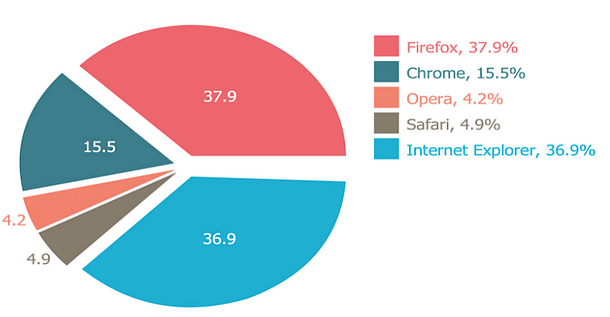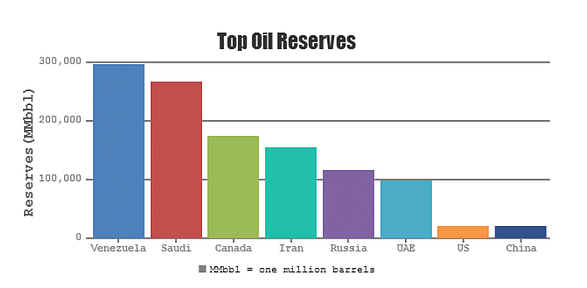byShubhankar Das Content Writer - Study Abroad
GREData Analysis is also known as data interpretation. GRE data analysis is one of the four main concept areas in quantitative reasoning. Data interpretation in GRE examines the candidates ability to interpret, or visualize, data and make sense of the given information. GRE data analysis questions cover probability, statistics, and interpreting graphs. The question types of data analysis in GRE are Multiple-choice (both types) or Numeric Entry.

There are only three GRE Data Interpretation questions per section, leading to a total of six Data Interpretation questions on the test. GRE data analysis topics include basic descriptive statistics, interpretation of data in tables and graphs, elementary probability, random variables and probability distributions, and counting methods. These topics are collected from high school algebra courses or introductory statistics courses. Achieving a result of 150+ in the quantitative section is considered a good GRE score.
| Table of Contents |
GRE Data Analysis Questions Type
The GRE Data Interpretation questions come in more than one form. GRE exam pattern for Data analysis contains 7 types of questions. Hence, it would be ideal to learn GRE data interpretation in GRE formulas. The GRE Data Interpretation will present information in any one of a number of visual formats. These include:
- pie charts
- bar charts
- line graphs
- scatterplots & best-fit lines
- box plots
- histograms
- charts of numerical data
Here are the different types of data that candidates will come across on the data analysis in GRE test.
Pie charts are mostly called circle graphs because they are circular charts divided into sectors. The sectors demonstrate percentages or proportions of a quantity that is defined in the question itself.
Example: The pie chart illustrates browser penetration among internet users across Europe.

Candidates can use this information to answer any question thrown at them. For instance, if the question asks you to find the number of Chrome users given that the total number of users is 1 million. Then you can simply use your knowledge of percentages, and say that the number of Chrome users is 15.5% of 1,000,000 = 155,000.
Column charts are also known as bar charts. A bar chart is a kind of visual illustration that has rectangular bars with lengths proportional to the values they represent. The bars can be plotted vertically or horizontally.

Example: In this graph, candidates can see how a bunch of countries compare when it comes to the number of oil reserves they hold. For instance, given that Venezuela has 300,000 million barrels of oil, and Iran has 150,000 million barrels. Then you can say that Venezuela has twice as much oil as Iran, or that the ratio of their oil reserves is 2:1. You may even be asked questions related to ratios, proportions, and percentages.
Line charts are usually shown on TV to compare the progress of two quantities.
Example: The GDP growth rates of two countries over time, or the performance of two stocks in the last quarter, and so on. Line graphs display the movement or growth of quantities.
Here is an example of a line graph

With such graphs, you will be asked questions like which year saw the maximum percentage change in share of voters. For the Democratic party, or the average percentage share of the voters for the Republican party from 1980 to 2010. You will be able to answer such questions easily if you are able to identify the data points correctly from the given line graphs.
Scatter plots are rarely seen on the GRE, compared to the other types of graphs that we discussed in this chapter so far. Scatter plots are useful to display bivariate data.
Example: age and weight of several persons on the same graph, or their annual income. Along with the amount of debt they carry, or their number of kids and number of cars, and so on.
For instance, a scatter plot may be used to show the number of hours studied by students In a university and the corresponding score in data analysis questions in GRE.

Using this graph, it is easy to answer any questions related to the information provided here. For example, you may be asked about the highest score in GRE quant among those who studied less than 30 hours.
GRE Data Analysis Score
GRE data analysis is a part of the quantitative section. GRE score for the Quantitative section ranges on a scale of 130 to 170. Candidates need to do effective preparation and regular practice of data analysis and the other 3 parts of the quantitative section to achieve a higher score. Achieving a result of 150+ in the quantitative section is considered a good GRE score.
GRE Data Analysis Preparation Books
GRE quant books contains all the effective study materials and questrion papers as well. GRE books for preparation helps candidates to understand the exam format, and question types. Here are a few data analysis GRE books listed below for preparation.
-
The Official GRE Guide: Check PDF
-
Manhattan Prep 5 Lb: Check PDF
-
GRE Prep by Magoosh: Check PDF
-
Kaplan GRE Math Workbook: Check PDF
-
GRE Prep by Magoosh: Check PDF
-
Barron’s New GRE (19th Edition): Check PDF
-
Cracking the GRE:Check PDF
-
Official GRE Quantitative Reasoning Practice Questions:Check PDF
GRE Data Analysis Preparation Tips
Data interpretation GRE tips and tricks are the most required ones since that is the most difficult section. Here are a few GRE preparation tips for data analysis, that we have curated to answer the data interpretation questions:
- Scan the Data Presentation: Candidates must briefly scan the data to understand the question. But do not spend a lot of time studying all of the information in detail. Focus on the axes and scales of graphs, units, and orders of magnitude to any notes that clarify the data.
- Read the Scale Properly: When answering graphical data presentations, read the scales, estimate, or compare quantities according to the corresponding scales. For instance, be aware of broken scales and of bars. As it is not accurate and does not start at 0.
- Know the Facts: The data analysis in GRE test questions are to be answered only on the basis of the data presented. Do not mix the fact with any previous sample question.
GRE Data Interpretation Practice Papers
GRE data interpretation needs to be thoroughly practiced. So along with the GRE practice papers, regular mock tests must be conducted. GRE data analysis formulas helps candidates to solve the questions in short span of time. GRE data interpretation questions with solutions pdf are available in various books and online portals to accelerate the GRE preparation. Here are a few GRE data analysis practice questions:
Having said all that, solving GRE Data Interpretation questions is not so difficult either. If students are aware of the data analysis problems in GRE basic concept and the strategies needed to tackle specific questions on the test, then they should be in a safe spot.
FAQs
Ques. What is GRE Data Analysis?
Ans. GRE Data Analysis is a section of the GRE (Graduate Record Examination) that assesses your ability to interpret and analyze data presented in various formats, such as tables, charts, and graphs.
Ques. How is GRE Data Analysis different from other sections of the GRE?
Ans. Unlike other sections that test verbal and quantitative reasoning, GRE Data Analysis focuses exclusively on your ability to understand and draw conclusions from data, making it a distinct section within the GRE.
Ques. What types of data are typically presented in GRE Data Analysis questions?
Ans. GRE Data Analysis questions may include data related to topics like statistics, economics, science, or social sciences. You'll encounter various formats, such as bar charts, line graphs, pie charts, and tables.
Ques: What is GRE data analysis?
Ans: GRE Data Analysis is also known as data interpretation. GRE data analysis is one of the four main concept areas in quantitative reasoning. Data interpretation in GRE is the ability to interpret, or visualize, data and make sense of the given information.
Ques: Which GRE sections include data analysis questions?
Ans: Data analysis questions are found in the Quantitative Reasoning section of the GRE. The quantitative reasoning section includes 4 parts, and there are a total of 27 questions to evaluate the candidate's mat skills.
Ques: What types of data analysis skills are assessed in the GRE?
Ans: GRE data analysis evaluates skills such as interpreting graphs, understanding statistical concepts, and solving quantitative problems.
Ques: Can I use a calculator for GRE data analysis questions?
Ans: A basic calculator is allowed for the Quantitative Reasoning section, including data analysis questions.
Ques: How are data interpretation questions structured in the GRE?
Ans: Data interpretation questions often involve analyzing tables, charts, and graphs to answer related questions. These topics are collected from high school algebra courses or introductory statistics courses.
Ques: Are there any specific GRE preparation materials for data analysis?
Ans: GRE official guides and test prep materials cover a range of data analysis topics to help you prepare. Candidates can purchase GRE official guidebook from the ETS official website.
Ques: Can I skip data analysis questions if I find them challenging?
Ans: You can skip data analysis questions, but each question contributes to your overall score, so it's generally advisable to attempt all questions.
Ques: Are there practice tests specifically for GRE data analysis?
Ans: Official GRE practice tests include a variety of data analysis questions to help you prepare for better scores. You can find the practice tests on the official website and other reputed websites as well.
Ques: How can I improve my data analysis skills for the GRE?
Ans: You can improve data analysis by practicing regularly with GRE sample questions, reviewing mathematical concepts, and using prep materials from official resources.
Ques: Are there any online resources for additional GRE data analysis practice?
Ans: Various online platforms and coaching centers offer additional practice questions and tutorials specifically focused on GRE data analysis. These platforms and coaching centers also provide expert mentorship for effective preparation.
Ques. Are calculators allowed in the GRE Data Analysis section?
Ans. No, calculators are not allowed in the GRE Data Analysis section. You must perform calculations manually if required, so practicing mental math skills is important.
Ques. How many GRE Data Analysis questions can I expect in the test?
Ans. The number of Data Analysis questions can vary from one GRE test to another, but you can typically expect around 4 to 6 questions in this section.
Ques. What skills are assessed in GRE Data Analysis questions?
Ans. GRE Data Analysis questions evaluate your ability to interpret data accurately, recognize trends and patterns, make inferences, and draw logical conclusions based on the information provided.
Ques. How can I prepare for GRE Data Analysis effectively?
Ans. To prepare for GRE Data Analysis, practice solving data interpretation questions regularly, review basic statistical concepts, and familiarize yourself with various types of data presentation formats.
Ques. Are there any specific strategies for tackling GRE Data Analysis questions?
Ans. Yes, strategies such as skimming the data, identifying key trends or outliers, and eliminating incorrect answer choices can be helpful when approaching GRE Data Analysis questions.
Ques. How much time should I allocate for GRE Data Analysis questions during the test?
Ans. You should aim to spend about 35 minutes on the entire GRE Data Analysis section, so manage your time wisely to ensure you can address all the questions effectively.
Ques. Are GRE Data Analysis scores separate from the overall GRE score?
Ans. No, GRE Data Analysis scores are part of the overall GRE score.
*The article might have information for the previous academic years, which will be updated soon subject to the notification issued by the University/College.




Comments